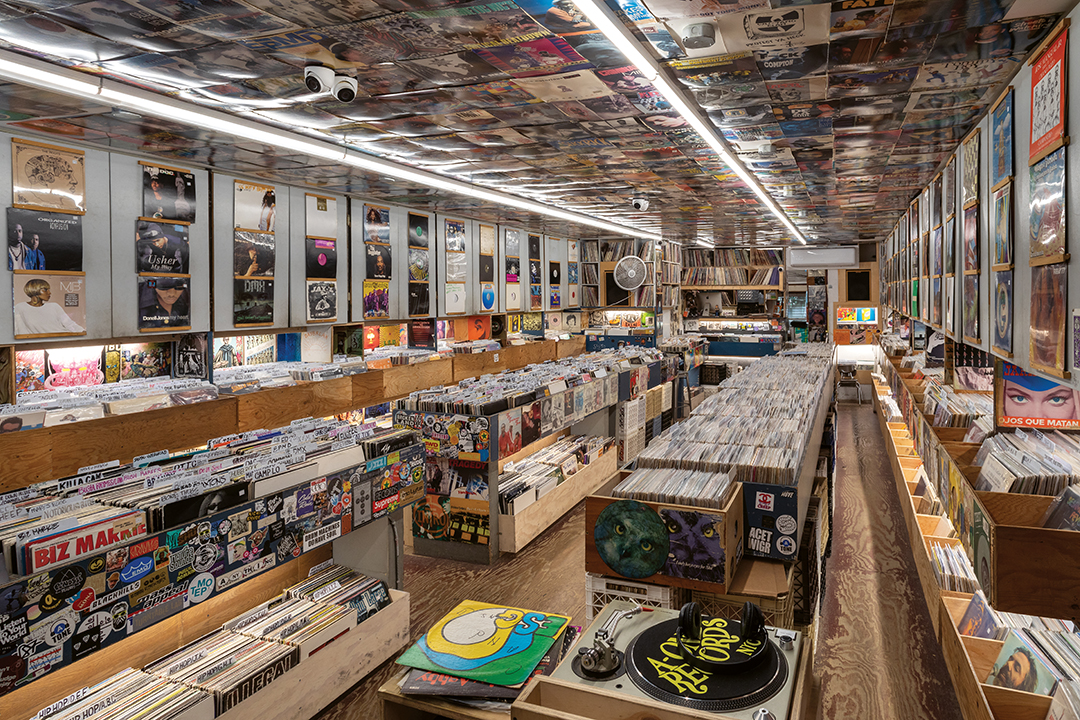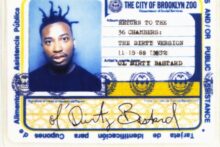There are over 200 record shops in New York City. Some of them date back to the middle of the last century. In recent years, several much-beloved stores have closed down: Other Music, Deadly Dragon, Rebel Rebel, among others. James and Karla Murray are on a mission. The NYC-based husband-and-wife photographic team have spent a quarter-century documenting the unique topography of their home town, snapping its dive bars and bodegas, its candy stores and corner delis, its hi-fi shops and haberdasheries. Theirs is a New York of neon signs and art deco stylings, chipped tiles and ornate facades.
For their latest book project, Vinyl NYC, they’ve refocused their lens on the city’s many record shops, crossing the five boroughs to scour through dusty stacks of used wax. From reggae boutiques in the Bronx to the six-decade old Staten Island emporium where the RZA bought his first deep cuts, Vinyl NYC is a crate-diggers paradise.
I caught up with Karla and James to chat ‘black gold’, the importance of mom-and-pop stores and what makes the perfect record shop.
What is it about New York City’s record stores, in particular, that makes them so special?
New York City’s record stores are so special because they provide a sense of community. They are true melting pots, places where people from all backgrounds and musical tastes can mingle and share stories and recommendations. The person digging next to you could be discovering the joy of vinyl for the first time or may even be a legendary musician, producer, or DJ searching for inspiration and new beats or grooves. Entering a vinyl shop always offers an escape from the hustle and relentless pressures of life. Here, problems are left behind and the sole focus is on listening to music, possibly finding something new being spun on the in-store decks or discovering an exciting label or artist among the racks and bins.
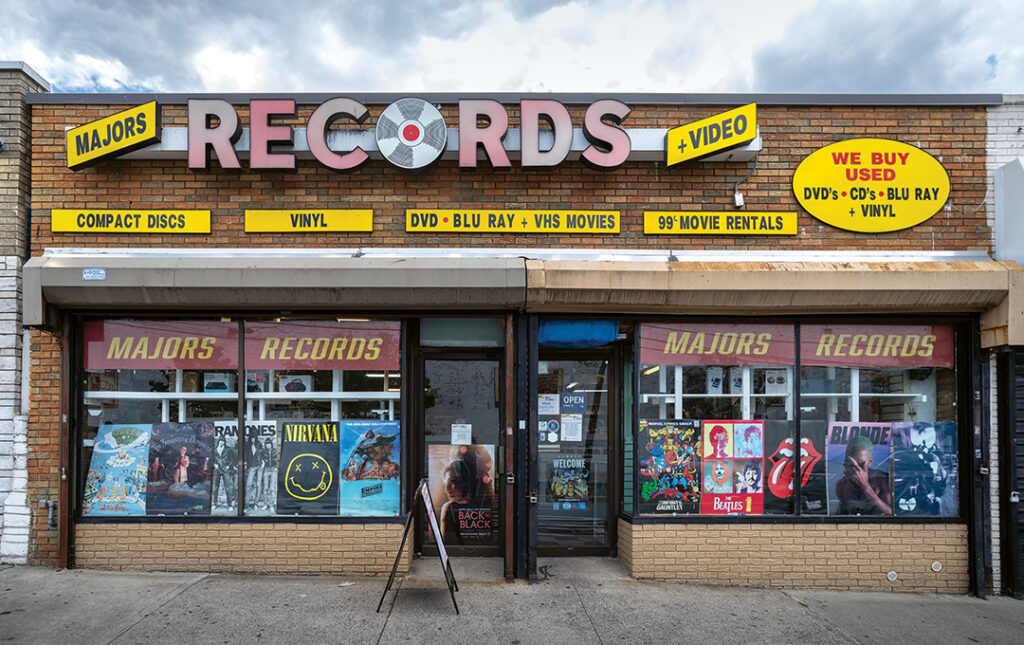
One thing that amazes me about this project is how you managed to resist the temptation to completely bankrupt yourselves in the course of it! Touring all these shops, I know I would not have been able to stop myself buying so many records that the making of the book would have been prohibitively expensive. What are you guys looking for when you dig through the crates? You mention in the introduction that you’ll sometimes buy a disc based on the sleeve alone – what kinds of qualities in a record sleeve do you find impossible to resist?
We are always on the never-ending search to find that ‘black gold’. We are true crate diggers, driven by the thrill of the hunt and the hope of finding a long forgotten musical treasure that perhaps accompanied us during a certain phase or time in life that we can now return to. We collect many genres of music, including dance, electronic, rock, hip-hop, jazz, pop, funk and reggae, both LP’ and 12” singles. While visiting the shops we photographed, we were also lucky enough to meet record producers, musicians and label owners, who showed us their new albums and projects, which led us to find new favorites to add to our collection. We definitely have chosen some of our vinyl purchases, based solely on the jacket’s artwork. It can have a certain typography, layout, photography or design, which we find impossible to pass by, and will purchase without even hearing a note of the music inside.
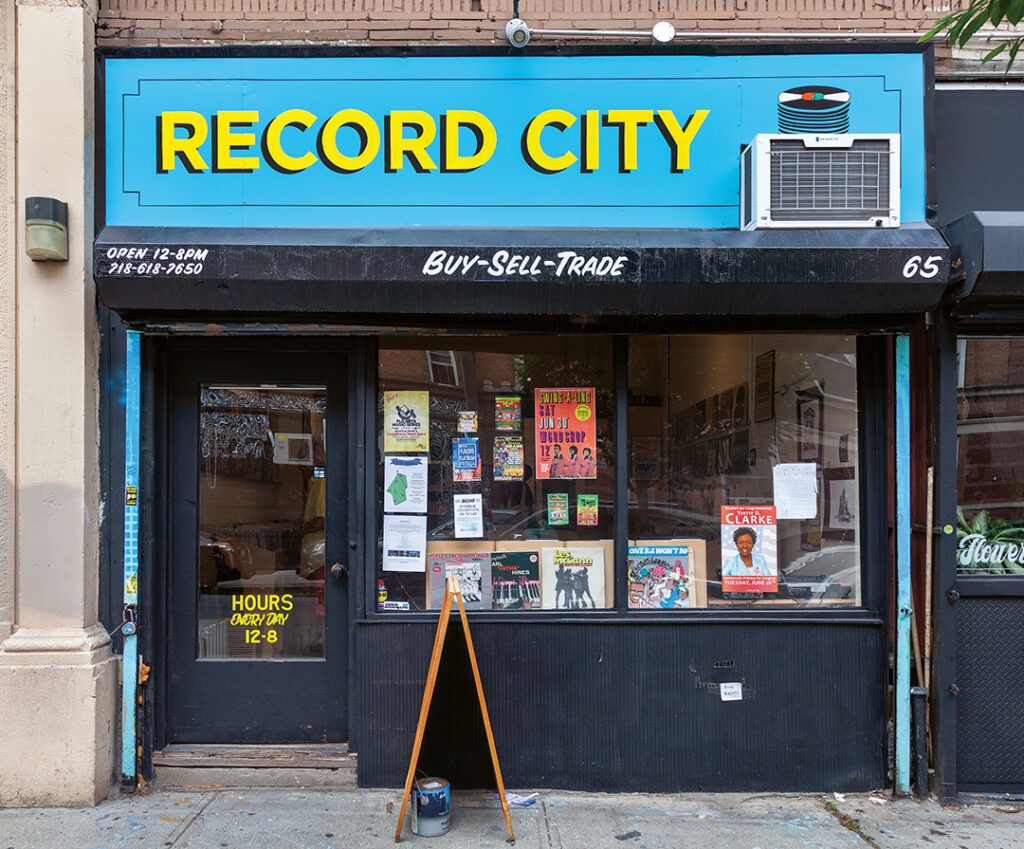
Were there any memorable conversations you were able to eavesdrop on while snapping these instore pictures?
Eavesdropping is a huge part of the fun while inside a record store! We ended up meeting Steve Rosenthal, Blondie’s producer, while at Village Revival Records and had a great conversation with him. We also met a few musicians and DJs who were shopping for vinyl at Generation Records, Paradise of Replica Human Head Records, Record City and Captured Record Shop. We reminisced about music culture in New York City with them. Large Professor, who we met at Academy Records while we were taking the photos for our book, was definitely one of our major encounters. We did not even realise that he was standing and looking through the bins of ‘new arrivals’ when we took the overview photo from the doorway of the shop, which appears on page 210–211 of our book. As we moved deeper into the store, we recognised him while he was at the listening station, checking out some of his selections, and he was happy to be featured as an artist in our book project.
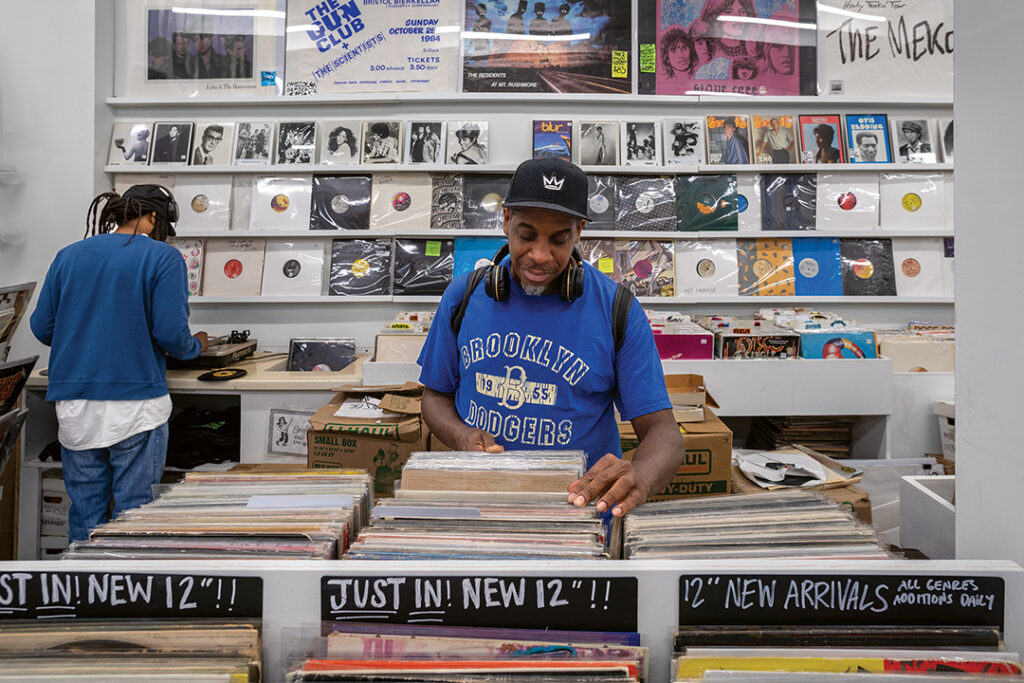
The book focuses on record stores that are open now, but can you share with me some memories of the record stores you grew up with? Where were you buying vinyl as kids? What were the first records you ever bought? What images come to mind when you think of your early record shopping experiences?
Yes, we both grew up listening and purchasing vinyl records! We both remember shopping at Bleecker Bobs, Bleecker Street Records, Rocks In Your Head, Second Coming, Sounds on St Marks Place, Other Music, Rebel, Rebel… the list goes on and on. We still have the very first record James ever purchased! It is Bruce Springsteen’s Darkness On The Edge Of Town. It is pretty worn from many years of listening to, as James bought it new in 1978! Karla was a big 45 RPM collector, but Blondie albums were among her first purchases. Buying a complete album back when we were kids was a ‘luxury’ purchase and the excitement of taking the album home with us and listening to it for the first time is something we will always remember.
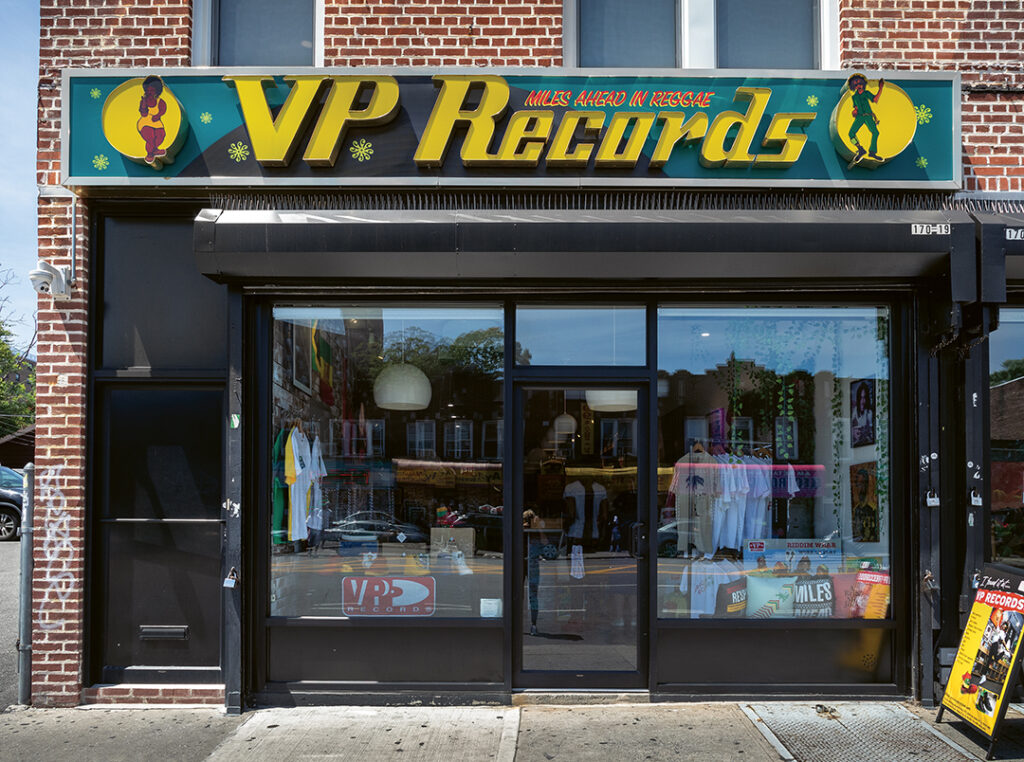
After NYC, what are your favourite cities to go record shopping in? Can you tell me about any non-New York record stores you’ve loved? If you were to make a sequel to this book in a different city – or even a different country – where would you pick?
We travel back and forth to Miami quite a bit for our architectural photography work and love visiting Sweat Records in the Little Haiti neighborhood of Miami. It has a great selection of both new, reissues and used vinyl and also has many great listening events, bringing the community together. Technique Records in Miami and Lucky Records are fun to visit, too. If we were to make a sequel in a city other than NYC, Miami and London would be our first picks.
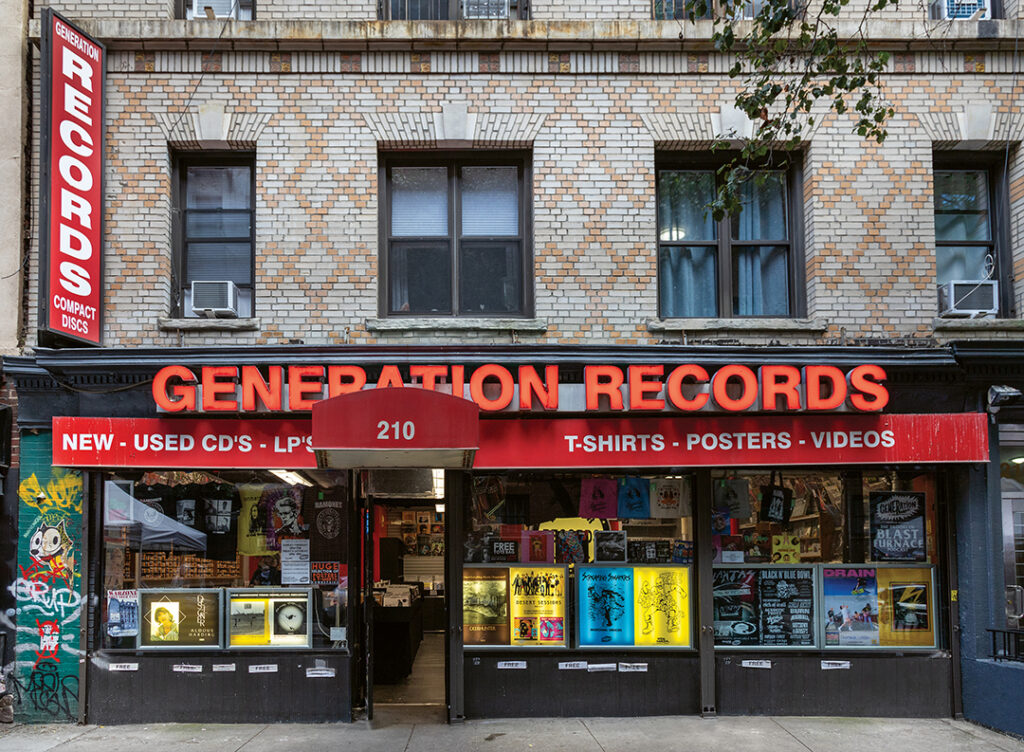
Your previous photo book Storefront NYC gives a really vivid impression of the different diasporic communities to be found in New York. In the shopfronts in that book you can see writing in French, Hebrew, Chinese, Cyrillic… Irish flags and Italian names. Do you think a city’s record shops represent the community in the same way as its diners and delis? What led you to go from documenting storefronts in general to zeroing in on just record shops?
The city’s record shops are most certainly important to the community, just like the many diners, delis and bars we have photographed, each one is unique and are often gathering places in the neighborhood. Generation Records is known for its selection of punk, hardcore and heavy metal among the variety of genres it carries and regularly hosts in-store music performances, signings and Record Store Day events. And Rough Trade, also, is known for its full and vibrant calendar of in-store events. Some record shops even go above and beyond acting as ad hoc community centres, not only providing a place to go crate-digging and listen to and discover music, but also give back to the community, including the Record Shop in Red Hook, Brooklyn and VP Records, the iconic reggae, dancehall, and soca music shop and distributor in Jamaica, Queens. VP Records not only hosts Record Store Day events and artist meet-and-greets and book signings, but also has a foundation that supports music and arts education for underprivileged youth.
Our mutual love for music and indie record stores coupled with the fact that we noticed a recent resurgence of vinyl record shops, led us to concentrate our photography on them. It was a great way of not only highlighting their importance but also our way of giving back to the vinyl community which has been such an important part of our lives for so many years.
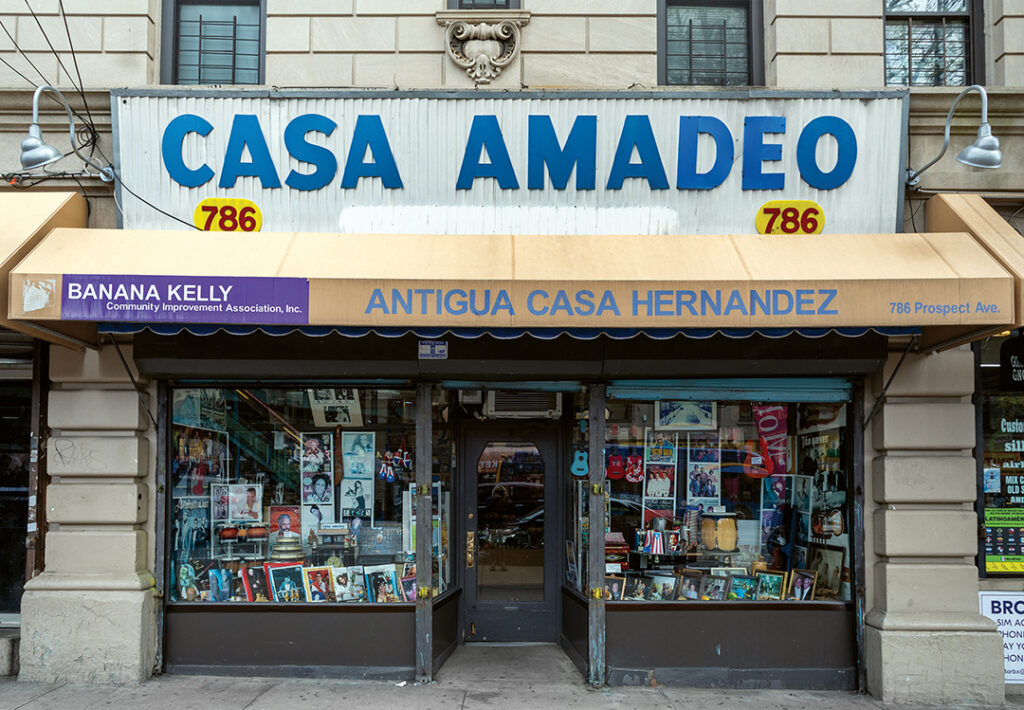
From the introduction of Storefront NYC, I get the sense that you’re trying to document something before it disappears. There’s almost an element of mourning, perhaps, for a lost or disappearing New York. How would you characterise the changes you’ve seen the city go through in your lifetimes? Are the same processes as legible in New York’s record stores as in other kinds of shops? Is this a narrative of decline and fall? Or is it more complicated than that?
New York City continues to evolve and it is exciting to live in the middle of that change. However, New York’s timeworn, generational mom-and-pop stores, which contribute to the spirit and cultural diversity of the streets, is an important part of what makes it a unique and memorable place. Many shops have been threatened by economic pressures, the takeover of chain stores with their uniform branding and rapidly changing demographics. We hope that our book Storefront NYC acts as an artistic intervention, to help draw attention to and preserve the small shops whose existence is essential to the distinctive, colourful atmosphere of the city’s streets. Although we witnessed firsthand the closing of many of our favourite record stores in New York City in the early 2000s, due to vinyl’s waning popularity at that time coupled with ever-increasing rents, we were excited to see a recent resurgence of these shops. With Vinyl NYC, we in particular hope our book encourages people to go out and explore the city’s many independent vinyl record shops, letting the music, memories, and new discoveries move them so that these shops can stay in business for generations to come. And next time you contemplate whether or not to purchase some vinyl at your local shop, try to remember the motto at Human Head Records in Bushwick, Brooklyn: “Records before rent.”
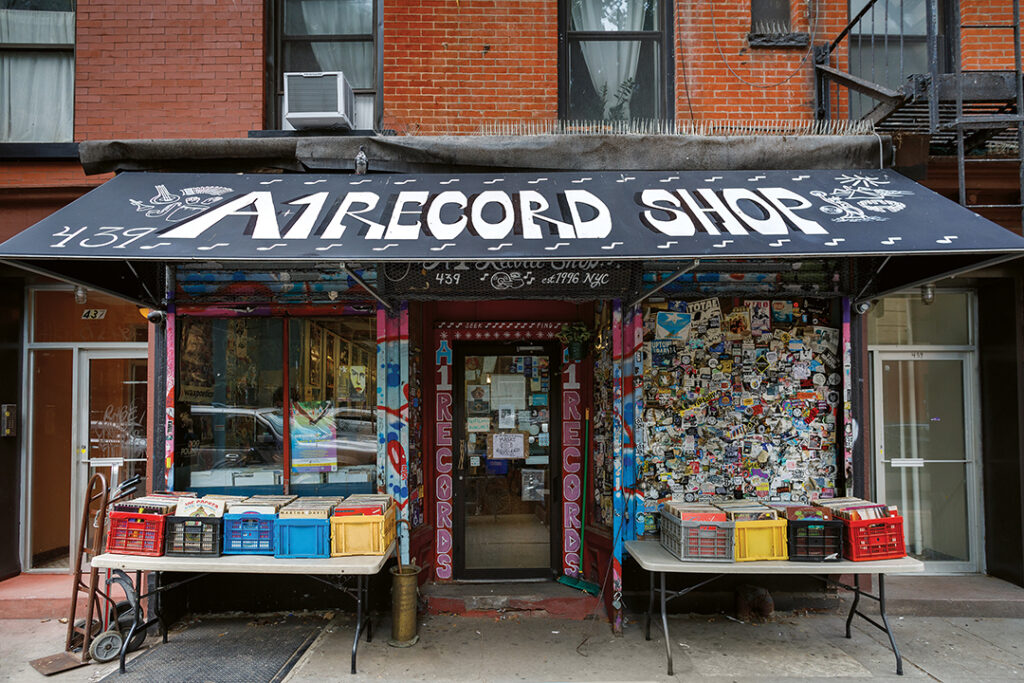
What features do you see characterising the perfect record store? If you could open a record store of your own, what would it be like and what would you call it?
The ‘perfect’ record store for us would not only have a diverse selection of many musical genres but definitely include both new vinyl titles, including Record Store Day releases, but also a broad and diverse selection of secondhand vinyl in a variety of price points, especially $1–$2 bins for the crate-diggers. The perfect store would also have very welcoming and helpful staff, who you could get recommendations from, and so discover new music, too. We ideally would like it to be organised by genres, artists, with clearly marked dividers, but also have boxes and/or crates for the bargain crate-diggers. If we were to open our own record store it would have all of the above and also a friendly dog – like our dog Hudson – roaming the shop. J & K Records would be our name!
Vinyl NYC: 33 1/3 of the Best Record Stores Across All Five Boroughs, Photographs by James T. and Karla L. Murray, text by Hattie Lindert © 2025 Prestel Verlag, Munich · London · New York

